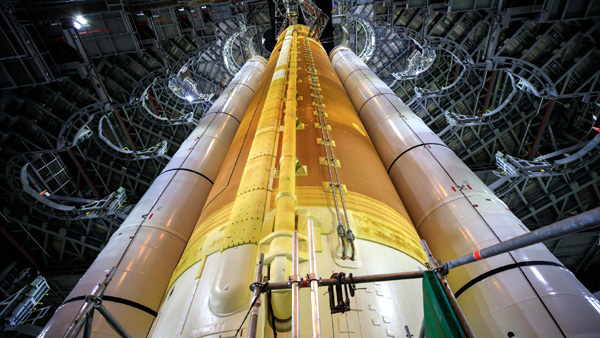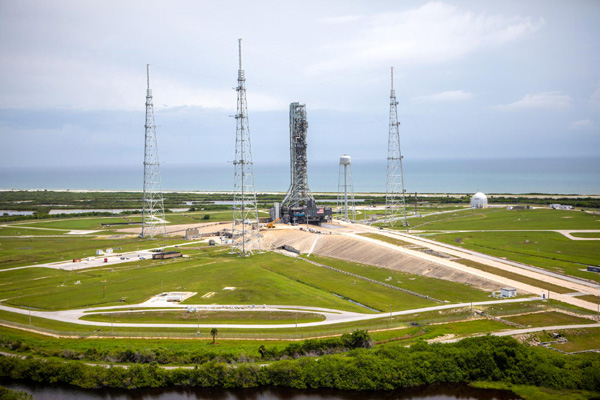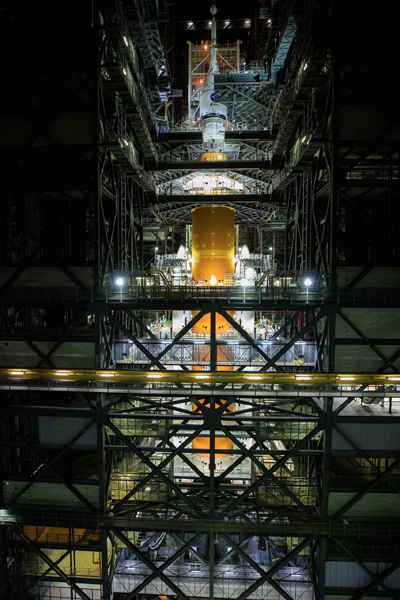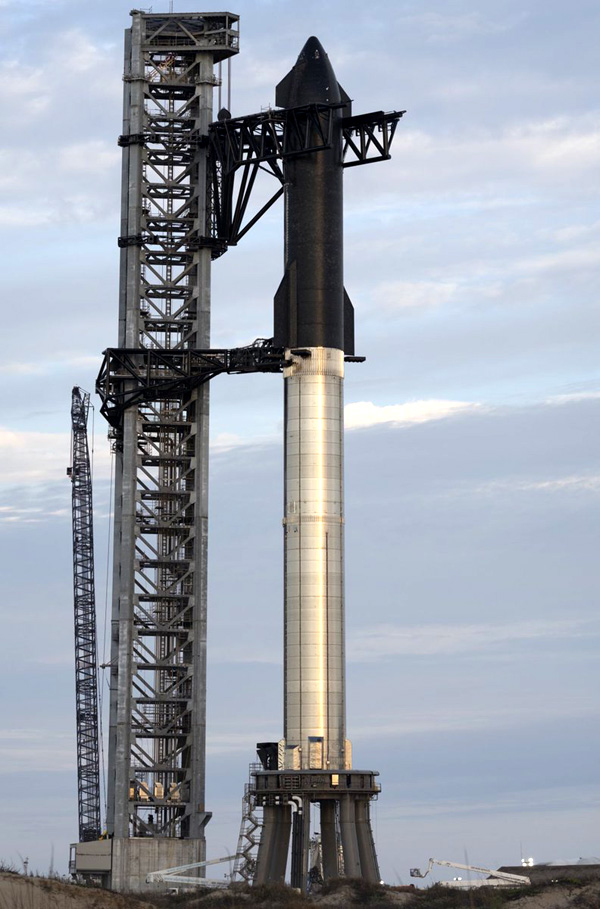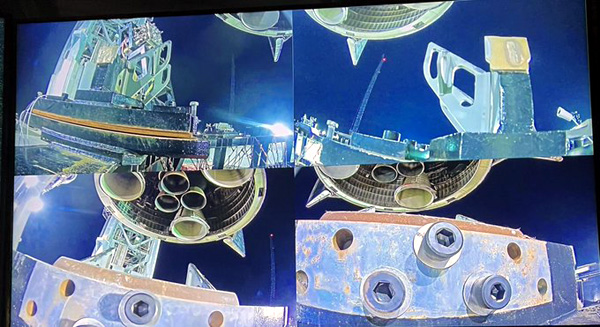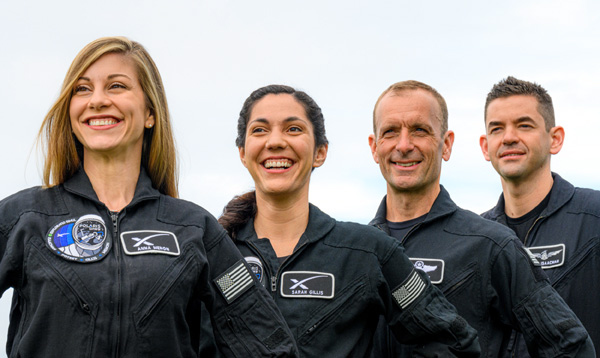 Polaris Program
Polaris Program will Undertake a Series of Pioneering SpaceX Dragon Missions, Demonstrating New Technologies and Culminating in the First Human Spaceflight on Starship (Press Release)
Led by tech entrepreneur and Inspiration4 commander Jared Isaacman, this program will advance deep space exploration while raising global awareness for St. Jude Children’s Research Hospital®.
LOS ANGELES, CA (February 14, 2022) –
Polaris Program
Polaris Program will Undertake a Series of Pioneering SpaceX Dragon Missions, Demonstrating New Technologies and Culminating in the First Human Spaceflight on Starship (Press Release)
Led by tech entrepreneur and Inspiration4 commander Jared Isaacman, this program will advance deep space exploration while raising global awareness for St. Jude Children’s Research Hospital®.
LOS ANGELES, CA (February 14, 2022) – Today Jared Isaacman, founder and CEO of
Shift4 (NYSE: FOUR), announced the
Polaris Program, a first-of-its-kind effort to rapidly advance human spaceflight capabilities, while continuing to raise funds and awareness for important causes here on Earth. The program will consist of up to three human spaceflight missions that will demonstrate new technologies, conduct extensive research, and ultimately culminate in the first flight of SpaceX’s
Starship with humans on board.
The first mission,
Polaris Dawn, is targeted for no earlier than the fourth quarter of this year and will be commanded by Isaacman, an accomplished pilot and astronaut who led
Inspiration4, the world’s first all-civilian mission to orbit that helped raise over $240 million for St. Jude Children’s Research Hospital®.
“The Polaris Program is an important step in advancing human space exploration while helping to solve problems through the use of innovative technology here on Earth,” said Isaacman. “On Polaris Dawn, we endeavor to achieve the highest Earth orbit ever flown in addition to conducting the world’s first commercial spacewalk and testing of
Starlink laser-based communication. Alongside these important objectives, we will be supporting scientific research to advance both human health interests on Earth and our understanding of human health during future long-duration spaceflights.” Building upon the Inspiration4 mission, Polaris Dawn will continue to raise funds and awareness for St. Jude Children’s Research Hospital®.
THE POLARIS DAWN MISSION
SpaceX’s
Falcon 9 rocket will launch the Polaris Dawn mission from Launch Complex 39A at Kennedy Space Center in Florida.
Dragon and the Polaris Dawn crew will spend up to five days in orbit, flying higher than any Dragon mission to date and endeavoring to reach the highest Earth orbit ever flown.
While in orbit, SpaceX mission control will carefully monitor Dragon and the crew as they:
– Attempt the first-ever commercial spacewalk with SpaceX-designed extravehicular activity
(EVA) spacesuits, upgraded from the current intravehicular
(IVA) suit. The development of this suit and the execution of the EVA will be important steps toward a scalable design for spacesuits on future long-duration missions.
- Become the first crew to test Starlink laser-based communications in space, providing valuable data for future space communications systems necessary for human spaceflight to the Moon, Mars, and beyond.
- Conduct scientific research designed to advance both human health on Earth and our understanding of human health during future long-duration spaceflights. This includes, but is not limited to:
-- Using ultrasound to monitor, detect, and quantify venous gas emboli
(VGE), contributing to studies on human prevalence to decompression sickness;
-- Gathering data on the radiation environment to better understand how space radiation affects human biological systems;
-- Providing biological samples toward multi-omics analyses for a long-term Biobank; and
-- Research related to Spaceflight Associated Neuro-Ocular Syndrome
(SANS), which is a key risk to human health in long-duration spaceflight.
SpaceX and Polaris Dawn will also collaborate with the Translational Research Institute for Space Health
(TRISH), BioServe Space Technologies at the University of Colorado Boulder, Space Technologies Lab at Embry Riddle Aeronautical University, Weill Cornell Medicine, Johns Hopkins University Applied Physics Laboratory, the Pacific Northwest National Laboratory, and the U.S. Air Force Academy.
THE POLARIS DAWN CREW
The Polaris Dawn mission has many first-time objectives, so the Polaris Program chose a crew of experts who know each other well and have a foundation of trust they can build upon as they undertake the challenges of this mission. The crew includes:
MISSION COMMANDER, JARED “ROOK” ISAACMAN
In addition to commanding Inspiration4, Isaacman has over 7,000 flight hours of aviation experience, including ratings in multiple experimental and ex-military aircraft. He set speed-around-the-world records in 2008 and 2009, as well as 100 air show performances as a member of the
Black Diamond Jet Team, all of which were dedicated to charitable causes. In 2011, Isaacman co-founded what would become the world’s largest private air force, Draken International, to provide realistic adversary training for the United States Department of Defense.
MISSION PILOT, SCOTT “KIDD” POTEET
Poteet is a retired U.S. Air Force Lieutenant Colonel who served 20 years in various roles to include Commander of the 64th Aggressor Squadron, USAF
Thunderbird Demonstration Pilot, #4 Slot, USAF Weapons School Graduate, Operational Test and Evaluation Pilot, and
F-16 Flight Examiner. Kidd is a command pilot with over 3,200 flying hours in the F-16,
A-4,
T-38,
T-37,
T-3 and
Alpha jet. He logged over 400 hours of combat time in support of various operations around the world. Following his Air Force career, Kidd served as the Director of Business Development at Draken International as well as the Vice President of Strategy at Shift4 Payments. He most recently served as the Mission Director of Inspiration4.
MISSION SPECIALIST, SARAH GILLIS
Gillis is a Lead Space Operations Engineer at SpaceX, responsible for overseeing the company’s astronaut training program. This includes the development of mission-specific curriculum and training execution for both NASA and commercial astronauts who fly aboard the Dragon spacecraft. She prepared NASA astronauts for the first
Demo-2 and
Crew-1 missions, and most recently directly trained the Inspiration4 astronauts, the first all-civilian crew to go to orbit. Sarah is an experienced mission control operator, who has supported real-time operations for Dragon’s cargo resupply missions to and from the International Space Station as a navigation officer, and as a crew communicator for Dragon’s human spaceflight missions.
MISSION SPECIALIST & MEDICAL OFFICER, ANNA MENON
Menon is a Lead Space Operations Engineer at SpaceX, where she manages the development of crew operations and serves in mission control as both a Mission Director and crew communicator. During her tenure at SpaceX, Menon has led the implementation of Dragon’s crew capabilities, helped create the crew communicator operator role, and developed critical operational responses to vehicle emergencies, such as a fire or cabin depressurization. Anna served in mission control during multiple cargo and crew Dragon missions, including Demo-2, Crew-1,
CRS-22, and
CRS-23. Prior to SpaceX, she worked for seven years at NASA as a biomedical flight controller for the International Space Station.
Source: Polaris Program
****
 Polaris Program
Polaris Program


